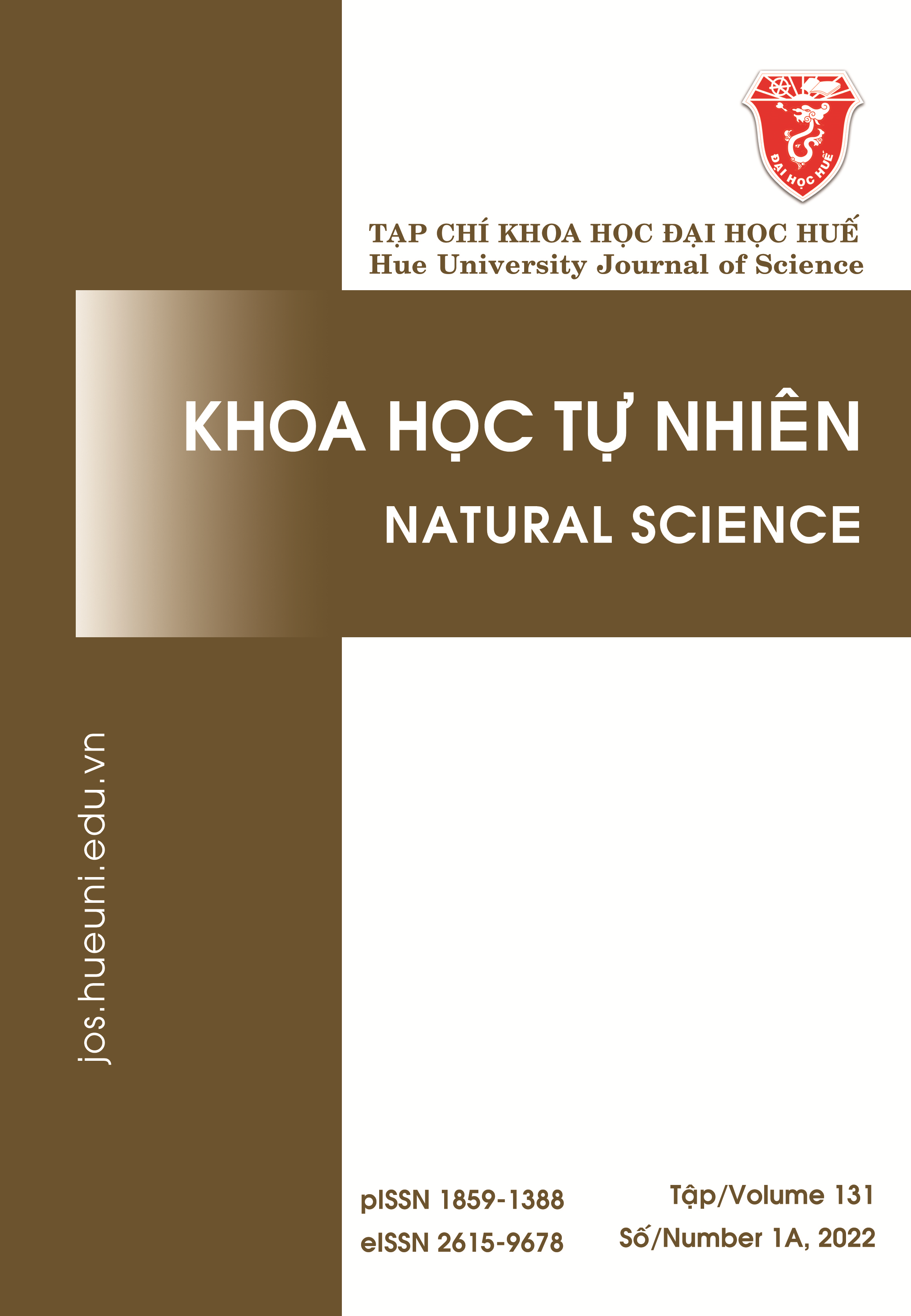Tóm tắt
Nghiên cứu này điều tra thành phần loài, đặc điểm hình thái, sự biến động mật độ tế bào của vi khuẩn lam (VKL) Raphidiopsis raciborskii và hàm lượng độc tố cylindrospermopsin trong hồ Buôn Phong. Hàm lượng độc tố được xác định bằng phương pháp ELISA. Kết quả cho thấy sự có mặt của 23 loài VKL phân bố trong 10 chi, 5 họ và 3 bộ (Chroococcales, Oscillatoriales, Noctoscales). Raphidiopsis raciborskii tồn tại dưới dạng sợi thẳng, nở hoa quanh năm với số lượng tế bào 53,6 × 106–58,3 × 107 tb/L. Độc tố cylindrospermopsin tồn tại trong suốt 12 tháng nghiên cứu với hàm lượng 0,04–0,72 µg/L. Mặc dù hàm lượng độc tố vẫn nằm dưới mức độ nguy hại (1 µg/L), nhưng sự xuất hiện độc tố trong nước hồ chứa cho thấy rủi ro tiềm tàng do đây là nguồn nước được sử dụng cho sinh hoạt, chăn nuôi và nuôi trồng thủy sản.
Tài liệu tham khảo
- Burford MA, Willis A, Chuang A, Man X, Orr P. Recent insights into physiological responses to nutrients by the cylindrospermopsin producing cyanobacterium Cylindrospermopsis raci-borskii. Chinese Journal of Oceanology and Limnology. 2018(36):1032-1039.
- Werner VR, Tucci A, da Silva LM, Yunes JS, Neuhaus EB, Berthold DE, et al. Morphological, ecological and toxicological aspects of Raphidiopsis raciborskii (Cyanobacteria) in a eutrophic urban subtropical lake in southern Brazil. Iheringia, Série Botânica. 2020;75.
- Amaral V, Bonilla S, Aubriot L. Growth optimization of the invasive cyanobacterium Cy-lindrospermopsis raciborskii in response to phos-phate fluctuations. Eur J Phycol. 2014(49):134-41.
- Rigamonti N, Aubriot L, Martigani F, Bonilla S, Piccini C. Effect of nutrient availability on cylindrospermopsin gene expression and toxin production in Cylindrospermopsis raciborskii. Aquat. Microb. Ecol. 2018(82):105-110.
- Puerto M, Prieto AI, Maisanaba S. Mutagenic and genotoxic potential of pure Cylindro-spermopsin by a battery of in vitro tests. Food Chem Toxicol. 2018(121):413-422.
- Yang Y, Yu G, Chen Y, Jia N, Li R. Four decades of progress in cylindrospermopsin research: The ins and outs of a potent cyanotoxin. Journal of hazardous materials. 2021;406:124653.
- Jin Y, Zhang SS, Xu HZ, Ma CX, Sun JM, Li HM, Pei HY. Application of N-TiO2 for visible light photocatalytic degradation of Cylin-drospermopsis raciborskii more difficult than that for photodegradation of Microcystis aeruginosa? Environmental Pollution. 2019(245):642-650.
- Stefanova K, Radkova M, Uzunov B, Gärtner G, Stoyneva-Gärtner M. Pilot search for cylindrospermopsin-producers in nine shallow Bulgarian waterbodies reveals nontoxic strains of Raphidiopsis raciborskii, R. mediterranea and Chrysosporum bergii. Biotechnology & Biotechnological Equipment. 2020;34(1):384-94.
- Nguyen TTL, Hoang TH, Nguyen TK, Duong TT. The occurrence of toxic cyanobacterium Cylindrospermopsis raciborskii and its toxin cylindrospermopsin in the Huong River, Thua Thien Hue province, Vietnam. Environmental Monitoring and Assessment. 2017;189(10):490.
- Karlson B, Cusack C, Bresnan E. Microscopic and molecular methods for quantitative phy-toplankton analysis (IOC Manuals and Guides, no. 55) (IOC/2010/MG/55). UNESCO, Paris. 2010.
- Duong TT, Sabine J, Le TPQ, Ho CT, Hoang TK, Nguyen TK, et al. The occurrence of cyanobacteria and microcystins in the Hoan Kiem Lake and Nui Coc Reservoir (Northern Vietnam). Environ Earth Sci. 2014(71)-:2419-2427.
- Pham TL, Dao TS, Tran ND, Jorge N, Claudia W, Utsumi M. Influence of environmental factors on cyanobacterial biomass and microcystin concentration in the Dau Tieng reservoir, a tropical eutrophic water body in Vietnam. Int J Lim. 2017(53):89-100.
- Havens KE, James RT, East TL, Smith VH. N:P ratios, light limitation, and cyanobacterial dominance in a subtropical lake impacted by non-point source nutrient pollution. Environmental Pollution. 2003;122(3):379-90.
- Dao TS, Cronberg G, Nimptsch J, Do-Hong LC, Wiegand C. Toxic cyanobacteria from Tri An Reservoir, Vietnam. Nova Hedwigia. 2010b-(90):433-448.
- Ryan EF, Hamilton DP, Barnes GE. Recent occurrence of Cylindrospermopsis raciborskii in Wai-kato lakes of New Zealand. New Zealand Journal of Marine and Freshwater Research. 2003(37):829-836.
- McGregor GB, Fabbro LD. Dominance of Cylindrospermopsis raciborskii (Nostocales, Cyano-prokaryota) in Queensland tropical and sub-tropical reservoirs: implications for monitoring and management. Lakes and Reservoirs Research and Management. 2000;5(3):195-205.
- Li X, Huo S, Zhang J, Xiao Z, Xi B, Li R. Factors related to aggravated Cylindrospermopsis (cyanobacteria) bloom following sediment dredging in an eutrophic shallow lake. Environmental Science and Ecotechnology. 2020;2:100014
- Recknagel F, Zohary T, Rücker J, Orr PT, Branco CC, Nixdorf B. Causal relationships of Raphidiopsis (formerly Cylindro-spermopsis) dynamics with water temperature and N:P-ratios: A meta-analysis across lakes with different climates based on inferential modelling. Harmful Algae. 2019;84:222-32.

công trình này được cấp phép theo Creative Commons Ghi công-Chia sẻ tương tự 4.0 License International .
Bản quyền (c) 2021 Array




